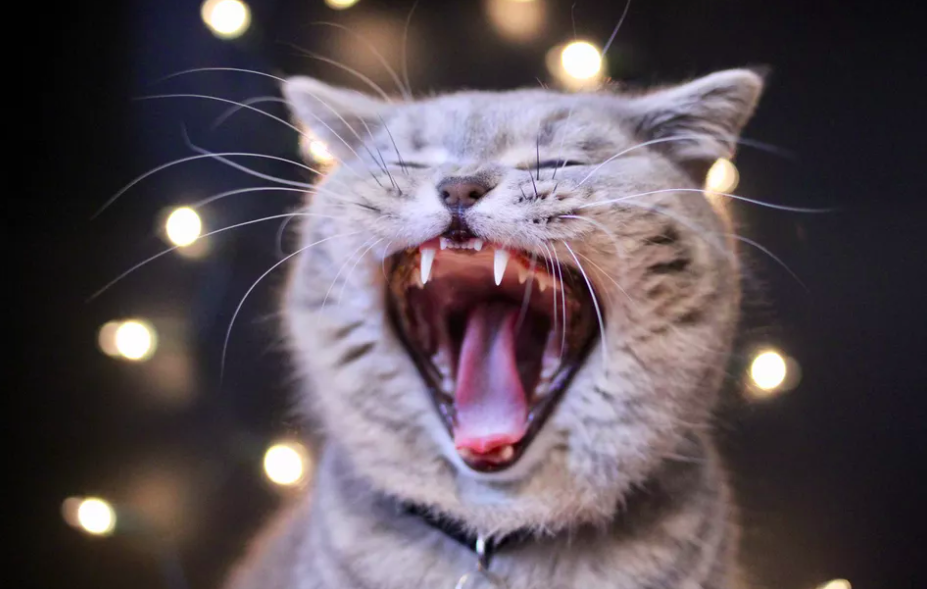
Gingivitis in Cats
Gingivitis is a typical cat disease that affects the gums. It can lead to infection, abscesses, and loss of teeth. This article discusses what gingivitis in cats is, how it is treated, and what you can do to prevent cat tooth diseases like gingivitis.
In cats, gingivitis is considered to be a cat disease that affects the gums. It can lead to infection and abscesses, but it most commonly leads to losing teeth in cats due to further damage from bacteria over time.
Gingivitis
Gingivitis in cats is not considered a serious condition, and it is quite common, but treatment options are available if the cat owner wants to pursue this option for their pet cat. Cats with dental problems typically display specific gum disease signs, including bad breath, red and swollen gums, and teeth that appear to be very loose or ready to fall out.
These can all result from cat gingivitis, but sometimes the cat will only show signs of poor health such as weight loss and lack of appetite, which also could mean other cat dental problems like cat tooth abscesses are present in addition to cat gingivitis.
Signs of gingivitis
Signs of gingivitis in cats also include a cat that drools a lot, gums that bleed easily when brushing or flossing the cat’s teeth, and even inflamed lymph nodes. Gingivitis is very easy to identify in cats because it typically leads to dental disease symptoms such as bad breath, which can be quite strong smelling rather quickly if your cat has this condition.
If cat gingivitis is noticed, it should be treated quickly. Gingivitis can lead to cat tooth abscesses and infection of the cat’s heart valves if left untreated because this bacteria spreads quickly throughout the cat’s body. There are many signs of cat dental problems, so keep an eye out for these warning signs in your pet cat.
Causes of gingivitis in cats
Causes of cat gingivitis are typically the same as cat dental problems. The cat’s teeth or gum line will be affected by plaque buildup if proper cat tooth care is not at home. Plaque is a sticky, colorless film that forms on cat teeth. It consists of bacteria, saliva, food particles, and other matter stuck together by mucin secreted by the cat’s tongue.
Plaque can also be caused by cats chewing when they are stressed or anxious, which leads to plaque buildup in their mouth. Tartar buildup can cause gingivitis in cats and other cat dental diseases such as cat periodontitis and cat stomatitis.
Other predisposing factors include:
- Infectious diseases such as feline leukemia virus, feline immunodeficiency virus, cat herpesvirus, and toxoplasmosis can lead to gingivitis.
- Genetics such as brachygnathism (an underbite) and malocclusion of cat teeth.
- Age-related changes such as cat arthritis, cat kidney disease, and cat liver disease can also lead to gingivitis.
- Stressors that may cause plaque buildup include cat boarding, cat grooming, cat shows,cat visits to the veterinarian, and cat car rides.
Treatment
Gingivitis in cats is treated with cat tooth root planing, which is a procedure that uses an ultrasonic scaler to clean out plaque along the cat’s gum line. Your veterinarian typically will provide cat owners with cat toothpaste for home use which can help prevent further cat dental problems if used regularly.
Cat gingivitis is prevalent, but it’s easy to treat, and follow-up treatments are also available, depending on the severity of your cat’s case. If caught early enough, mild cases only require at-home care that includes and cat dental care to reduce plaque buildup on your cat’s teeth.
For more severe cases, cat root planning is a good option for treatment, but it may be necessary to repeat the procedure in about six months, depending on how well your cat responds to this treatment method.
When left untreated, gingivitis can lead to dental cat abscesses, cat heart valve infection, and even death. Cat owners should be vigilant about cat teeth care to ensure that their pet cat is happy, healthy, and comfortable throughout its life.
Cats with gingivitis typically show signs of bad breath, so this would be the first sign an owner will notice if it is present in their cat. The cat gums will also be red and swollen, teeth may appear to fall out on their own, or the cat’s mouth might even bleed when you try brushing its teeth if this cat dental problem is present in your pet cat.
Other cat dental problems can also be present, such as cat tooth abscesses and cat heart valve infection. In these cases, the cat’s health will deteriorate over time if left untreated, which means he or she will also display signs of not feeling well outside of its oral health, including weight loss, lack of appetite, etc.
What you can do
Get your cat used to tooth brushing by:
-Putting cat toothpaste on your cat’s paw and let them lick it off.-Use a soft cat toothbrush for cat teeth cleaning.
-Brush your cat’s cat teeth a few times a week for at least 30 seconds per cat tooth brushing session.
-Use cat toothpaste that is meat flavored.
-To make cat teeth brushing easier, try using cat treats to reward your cat during the process of cat brushing.
-Make cat teeth cleaning a part of your cat’s regular cat care regimen by making it fun, interactive, and rewarding for them.
-Visit your vet for regular dental cleanings and checkups.
Final Thoughts
Gingivitis in cats is a condition that can affect cat teeth as well as other parts of your cat’s mouth. With the right cat dental care, you may be able to prevent gingivitis in cats before it becomes an issue for your kitty!
If you notice any signs of cat tooth problems or if your cat is experiencing discomfort with eating or with cat teeth, it may be time to take your cat to the veterinarian.